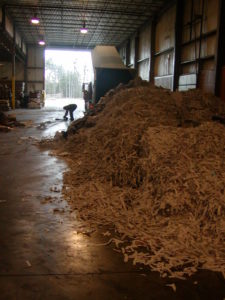April 22nd is Earth Day and the focus this year is “End Plastic Pollution.” You can follow the conversation with the hashtags: #EarthDay2018 and #EndPlasticPollution.
How much plastic is in our oceans?
For a number of years we have been reading articles about the “garbage patch,” a vast area located in the Pacific Ocean with a high concentration of scrap plastic.
There are also numerous articles regarding birds, animals, and marine life either ingesting plastic or somehow becoming entangled or entrapped in it. The result is usually death – as it’s only typically found after the fish, bird, or animal expires. One striking example of this was a sperm whale that was recently found dead, washed up on the coast of Spain. This whale’s stomach was found to contain 64 pounds of plastic waste. If we only notice these issues following their deaths, how many animals are living with these issues, or were never found?
A polluted beach: A plastic problem.
Plastic obviously has a purpose in our day-to-day lives. It is used to package just about every product we purchase or consume. When handled properly, most plastics can be recycled, however a large portion is not. Resin types, mixes, cross contamination, and lack of collection prohibit the recycling of all plastic produced.

Several years ago I had the opportunity to travel to a remote village on the east coast of Mexico. This village was located in an area called the Sian Ka’an Bioreserve, a form of national park / ocean reserve. The area was located about 4+ hours south of the popular tourist destination, Cancun.
This was a remote village, approximately 2 hours from a paved road. The beaches were beautiful, however there were remote sections, not cleaned or maintained, that had areas of plastic trash 6 to 8 feet deep. This consisted of everything you could think of – including drink bottles, coolers, flip-flops, rope, fish nets, you name it. The only common denominator – nearly all of it was plastic. On top of that, 80-90% of this plastic material was one time use, and only 5-10% would ever be reused or recycled.
One practical solution: Choose paper.
What if a company invented a plastic-alternative today that was convenient to use, and easy to handle, transport, and store? Would this product receive backlash from environmentalists? I would think it would. Unfortunately, plastics today are so ingrained in our society that replacements or alternatives receive little if any support.
Ask yourselves the next time you are lucky enough to walk on a remote beach, or along the road, do you see any paper based trash? Also – have there been any findings where paper based trash was found to have killed birds, animals, or marine life?
Paper is a sustainable, recyclable, biodegradable packaging material. Plastic is not. Choose paper. Contact Miller Recycling for any questions you may have on properly recycling plastics or paper.

